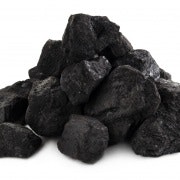Coal comfort for Europe
Europe's rising energy source is neither natural gas nor renewables: it is coal.
It came as a surprise for some and a spur for others at the second annual Unconventional Gas and Oil Summit in London this week, where optimism over the outlook for UK and European shale gas were riding high.
The US Energy Information Agency says coal exports from the US to Europe rose 23 per cent in 2012 to 66.4 million tons. Those shipments landed disproportionately in Western European countries, while US exports to many Eastern Europe nations actually fell.
This is a consequence of the US shale gas 'revolution'. Coal once used for domestic power generation is being exported and Europe is a fast growing market for the cheap, emissions-heavy product, to the detriment of non-subsidised gas.
On Thursday German natural gas closed at €25.75 (compared to US natural gas futures, which fell to $US3.85 per 1000 cubic feet), coal was priced around €95 a tonne and European emissions allowances on the primary market were €3.90 per tonne/CO2.
European Commission Energy Security Unit science officer Maximilian Kuhn said during the UGOS conference that Europe is competing with Asia for Middle Eastern gas, and prices will rise as a result of tightening global supply, made worse this year by an unusually harsh winter and more generally by demand from China and India.
The irony is that the economic problems being faced by European countries mean demand for energy has fallen. Between 2008 and 2011 energy consumption fell by 6 per cent, Eurostat announced in February, with the big five Germany, France, the UK, Spain and Italy all seeing reductions in national energy use.
Kuhn said Europe faces big questions over its energy use as the spread between coal and gas prices increases.
Predictions from the southern hemisphere are also helping market forces move Europe away from its planned energy approach. The chief executive of freight company GMI Resources UK, Steve Rodley, said last week the company would offer $US2000-a-day subsidies for coal deliveries from Australia and Indonesia to Europe due to a glut of Panamax-class ships.
And across Europe unprofitable gas plants are being idled as rising gas prices make stoking coal-fired plants a commercially sensible option. In May, Norway’s state energy company, Statkraft, closed a gas power plant in Germany and German utility E.ON said it was considering closing several, including a state-of-the-art facility in Slovakia.
EC Energy director general Philip Lowe said a fixed carbon price of around $45 might help to move the eurozone away from coal generation, but neither a high carbon price nor more subsidies were the required magic bullet.
However, the struggling post-recession EU economies and the increasing dependence on coal power generation are key drivers for clearing obstacles to the development of unconventional energy sources in Europe.
Europe is estimated to be sitting on 639 trillion cubic feet of technically recoverable gas reserves in 14 countries, according to the US Energy Information Administration. That would sate those countries' natural gas needs for 44 years, based on 2009 levels of consumption.
Lowe says Europe's dependency on imported fossil fuels will, by 2035, be almost as high as that of Japan, but there are obstacles aplenty to getting that gas out of the ground, not least that there is no consensus on the safety of the extraction process – fracking.
"Name me an energy technology and I can name at least one European member state that bans it," he said.
European and American speakers at UGOS alike made it very clear that the conditions that will make European shale oil and gas a success are different to those in the US - right down to the geology of the shale.
Not only do European landowners not have rights to the mineral resources below the surface of their properties, making the benefits of exploratory drilling in a populous area harder to sell, but hydraulic fracturing - fracking - has become a byword for bad oil and gas practices.
Byzantine legislation differs from country to country and although some states, such as Poland and Ukraine, are highly supportive of an industry that may free them from dependence on Russian gas, others such as Bulgaria and France (which sits on some of the largest estimated shale deposits in Europe) are strongly opposed.
Economic imperatives are coming to the fore though and in France both business groups and unions want the ban on hydraulic fracturing to be overturned.
Professor Alan Riley from the City Law School in London says European leaders haven't appreciated that the world has changed from when the EU made a "high energy-price bet" that US shale wouldn't pay off and it could forever sell expensive renewable technology to the world.
"I think a lot of national capitals are still running around thinking its 2007."
But he says once one country strikes gas and begins producing, the others will see the results and follow quickly.
It’s probably still two to four years away, but with renewable energy still not quite paying its way unconventional gas may be Europe’s only way out of a coal-fired environmental embarrassment.
Rachel Williamson is a freelance energy journalist based in London. @rwilliamson_
















